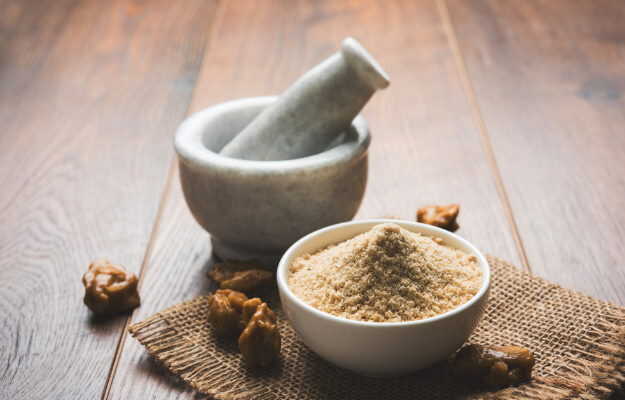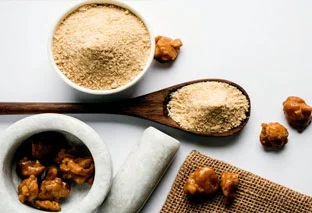Hing, or asafoetida, plays a vital role in Indian cuisine, adding depth and aroma to a wide variety of dishes. This aromatic spice is used differently across India’s regions, reflecting the diversity of flavors and cooking traditions. From enhancing dal and curries in North India to being a key ingredient in South Indian sambar and rasam, hing’s versatility is unmatched. In Gujarat and Rajasthan, it adds a distinctive touch to snacks and kadhi, while in Bengali cuisine, it substitutes onion and garlic in vegetarian dishes. Discover how this unique spice brings regional dishes to life and contributes to India’s rich culinary tapestry.
What is hing, and where can I buy authentic hing in India?
Hing, or asafoetida, is a pungent spice used in Indian cuisine. Authentic hing can be bought from local spice markets, grocery stores, and online retailers in India.
Hing, known scientifically as asafoetida, is a resinous gum obtained from the root of the Ferula plant. It is renowned for its strong aroma and unique flavor, often likened to a combination of garlic and onions. This versatile spice is integral to Indian cooking, enhancing the taste of various dishes with its umami qualities. To buy authentic hing in India, you can visit local spice markets, well-stocked grocery stores, or reliable online retailers. Always opt for reputable brands to ensure the quality and purity of hing, which is typically available in powdered form or as solid resin chunks.
When shopping for hing, it is also important to consider the type of hing you want. There are two main types: compounded hing and pure hing. Compounded hing is mixed with other substances like wheat or rice flour, which makes it less potent and more affordable. Pure hing, on the other hand, is more potent and has a stronger flavor. Depending on your cooking needs and personal preference, you can choose the type that best suits your requirements. Additionally, for those who prefer to use organic products, organic hing is also available in the market. These options provide flexibility in terms of flavor intensity and dietary considerations.
How does the flavor of hing differ in various regional Indian cuisines?
The flavor of hing varies across regional Indian cuisines, with North India using more potent forms and South India incorporating milder versions.
- North India: Uses a potent form of hing in dishes like dal and curries, providing a robust, earthy flavor.
- South India: Incorporates milder hing in dishes such as sambar and rasam, adding a subtle umami taste.
- Western India: Balances hing with other spices in dishes like dhokla and khandvi for a complex flavor profile.
- Eastern India: Uses hing sparingly, often in vegetarian dishes, to enhance overall taste without overpowering it.
The distinct regional flavors of hing in Indian cuisine showcase its versatility. In North India, hing is an essential ingredient in robust dishes like dal and curries, imparting a strong, earthy aroma that complements the hearty flavors. In contrast, South Indian cuisine features milder hing in staples such as sambar and rasam, where it contributes a subtle umami depth. Western Indian dishes like dhokla and khandvi achieve a balanced flavor by combining hing with other spices, resulting in a complex taste profile. Eastern India, known for its delicate vegetarian dishes, uses hing sparingly to enhance the overall taste without overwhelming the palate. This regional diversity highlights hing’s unique role in enriching Indian culinary traditions.
Moreover, the methods of incorporating hing also vary across regions. In North India, hing is often sautéed in ghee or oil before being added to dishes, which helps release its flavors and aromas. In South India, hing is typically added during the tempering process, where it is briefly fried along with mustard seeds, curry leaves, and other spices to enhance its infusion into the dish. Western Indian recipes may blend hing with other spice mixes, while Eastern Indian dishes might dissolve hing in water before adding it to the recipe. These diverse techniques further contribute to the distinctive flavors of hing in regional Indian cuisines.
What are some traditional dishes that prominently feature hing in different parts of India?
Traditional dishes featuring hing include North Indian dal, South Indian sambar, Western Indian dhokla, and Eastern Indian alu posto.
- North India: Dal Tadka, a lentil-based dish enriched with hing for a robust flavor.
- South India: Sambar, a spicy lentil and vegetable stew with a hint of hing.
- Western India: Dhokla, a steamed cake made from fermented batter, infused with hing.
- Eastern India: Alu Posto, a potato and poppy seed curry where hing enhances the earthy flavors.
Hing is a key ingredient in various traditional dishes across India, each reflecting the region’s unique culinary style. In North India, Dal Tadka stands out as a hearty lentil dish where hing adds a robust flavor, elevating its taste. South India’s beloved Sambar, a spicy lentil and vegetable stew, benefits from a hint of hing, which enhances its umami profile. Western India offers Dhokla, a fermented steamed cake, where hing’s infusion brings a subtle depth to the dish. In Eastern India, Alu Posto, a comforting potato and poppy seed curry, features hing to highlight and balance the dish’s earthy tones. These regional specialties showcase hing’s indispensable role in enriching the taste and aroma of Indian cuisine.
Expanding further on traditional dishes, North Indian cuisine also includes Chole (spicy chickpea curry) and Aloo Hing Jeera (potatoes with cumin and hing) as popular recipes where hing plays a vital role. In South India, hing is essential in preparations like Rasam (a spicy-sour soup) and Avial (a vegetable and coconut stew). Western India boasts of handvo (a savory vegetable cake) and patra (colocasia leaves rolls) as dishes where hing’s flavor is unmistakable. Eastern India’s Hing-er Kochuri (stuffed bread) and Shukto (a mixed vegetable curry) are classic examples where hing is used to bring out nuanced flavors. Each dish reflects the diverse application of hing and its significant contribution to the culinary heritage of India.
Are there health benefits associated with consuming hing, and how is it used medicinally in different regions?
Hing offers various health benefits, including digestive aid and anti-inflammatory properties, and is used medicinally across regions for ailments like bloating and respiratory issues.
- Digestive Aid: Hing is known for its ability to relieve bloating, gas, and indigestion.
- Anti-Inflammatory: Hing possesses anti-inflammatory properties that help reduce inflammation in the body.
- Respiratory Relief: Hing is used in Ayurvedic remedies to alleviate respiratory issues such as asthma and bronchitis.
- Menstrual Relief: In some regions, hing is used to relieve menstrual cramps and discomfort.
Hing, beyond its culinary applications, is celebrated for its numerous health benefits. It is widely recognized as a digestive aid, effectively relieving bloating, gas, and indigestion. Hing’s anti-inflammatory properties are beneficial in reducing inflammation throughout the body, making it a valuable component in traditional medicine. In Ayurvedic practices, hing is utilized to alleviate respiratory issues, including asthma and bronchitis, thanks to its ability to clear mucus and ease breathing. Additionally, in some regions, hing is employed to relieve menstrual cramps and discomfort, providing natural pain relief. These health benefits underline hing’s multifaceted role not only in enhancing food flavors but also in supporting overall well-being.
Moreover, hing is also known for its antimicrobial properties, which help in fighting off infections. It can be used as a remedy for mild infections and to support overall immune health. Hing is often consumed with warm water or buttermilk to help soothe stomach discomfort and promote digestion. It can also be made into a paste and applied externally to relieve insect bites or stings.
How do I properly store hing to maintain its freshness and potency?
To maintain its freshness and potency, hing should be stored in an airtight container away from moisture, heat, and direct sunlight.
- Airtight Container: Store hing in a tightly sealed container to prevent exposure to air and moisture.
- Cool, Dry Place: Keep hing in a cool, dry place to maintain its potency.
- Avoid Sunlight: Protect hing from direct sunlight to prevent degradation of its essential compounds.
- Away from Strong Odors: Store hing away from other spices or foods with strong odors to prevent contamination.
Proper storage is crucial to maintaining the freshness and potency of hing. To preserve its quality, hing should be stored in an airtight container that prevents exposure to air and moisture, which can degrade its potency. Keeping hing in a cool, dry place ensures it retains its unique flavor and aroma over time. It’s also essential to protect hing from direct sunlight, as exposure to light can cause the degradation of its essential compounds. Additionally, storing hing away from other strong-smelling foods and spices prevents contamination and preserves its pure, pungent scent. By following these storage guidelines, you can ensure that hing remains a valuable and effective spice in your culinary arsenal.
Furthermore, it is advisable to check the packaging date when purchasing hing to ensure you are buying a fresh product. Using airtight glass containers can be more effective in maintaining freshness compared to plastic ones. You can also use vacuum sealing methods if you buy hing in bulk to extend its shelf life. Regularly inspect your hing for any signs of moisture or clumping, which may indicate improper storage conditions.
Conclusion
Hing, an indispensable spice in Indian cuisine, offers unique flavors and numerous health benefits across various regions. Understanding its medicinal uses and proper storage ensures that you can fully appreciate and utilize this pungent spice in your culinary adventures. From aiding digestion and relieving respiratory issues to enhancing the flavors of traditional dishes, hing’s versatility makes it a valuable addition to any kitchen. Proper storage techniques are essential to maintain its potency and freshness, allowing you to enjoy the full benefits of hing. Embrace the rich culinary heritage of hing and discover the diverse ways it can elevate your cooking experience.

